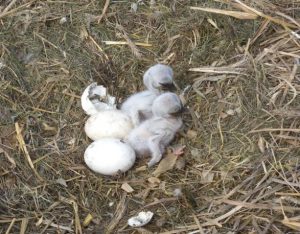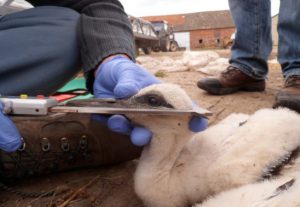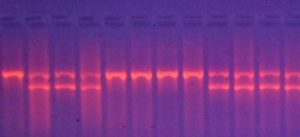2013 – 2016 NCN N/NZ8/01186 Preludium
Principle investigator
Marcin Tobółka
 The main objective of this project was to test how the white stork invests in sex of offspring under different environmental conditions. As the main factors we considered the weather conditions and agricultural land cover in the white stork territories. We predicted that under unfavorable conditions white stork females laid more eggs with female embryos, in favorable – with males. Another aims was to test wheatear sax ratio changes during brood rearing and if nestlings are removed due to their sex. The study was conducted in Wielkopolska region (Western Poland) in several study areas under different environmental conditions and different stages of agricultural intensification. Data of the basic parameters of the broods had been collected for about 50 pairs per year. Data of arrival dates of birds on the several nests were collected via questionnaires. Clutch size, number of hatched chicks and their growth rate were established during the direct inspections in nests. We also took blood samples. Due to the lack of sex determination of chicks directly in the field based on morphological characteristics, molecular analysis were needed. In Quantum GIS based on habitat grids – Corine Land Cover database, in buffers with a radius of 2km around the nest each major habitat types and degree of fragmentation of particular habitat types were calculated.
The main objective of this project was to test how the white stork invests in sex of offspring under different environmental conditions. As the main factors we considered the weather conditions and agricultural land cover in the white stork territories. We predicted that under unfavorable conditions white stork females laid more eggs with female embryos, in favorable – with males. Another aims was to test wheatear sax ratio changes during brood rearing and if nestlings are removed due to their sex. The study was conducted in Wielkopolska region (Western Poland) in several study areas under different environmental conditions and different stages of agricultural intensification. Data of the basic parameters of the broods had been collected for about 50 pairs per year. Data of arrival dates of birds on the several nests were collected via questionnaires. Clutch size, number of hatched chicks and their growth rate were established during the direct inspections in nests. We also took blood samples. Due to the lack of sex determination of chicks directly in the field based on morphological characteristics, molecular analysis were needed. In Quantum GIS based on habitat grids – Corine Land Cover database, in buffers with a radius of 2km around the nest each major habitat types and degree of fragmentation of particular habitat types were calculated.  Based on collected material we concluded than white storks invested equally in both males and females. We did not observed significant deviation in sex-ratio (proportion 1:1) between study years. Both adults arrival dates and territory quality did not have significant influence on chicks sex. Males and females hatched in the same probability in nests were adults arrived earlier (in good fitness) and later (weaker). Nestling sex did not reveal relationship with hatching order. However, we found that white stork males in age of 15-20 days start grow faster than their female siblings.
Based on collected material we concluded than white storks invested equally in both males and females. We did not observed significant deviation in sex-ratio (proportion 1:1) between study years. Both adults arrival dates and territory quality did not have significant influence on chicks sex. Males and females hatched in the same probability in nests were adults arrived earlier (in good fitness) and later (weaker). Nestling sex did not reveal relationship with hatching order. However, we found that white stork males in age of 15-20 days start grow faster than their female siblings.  Therefore in the end of nestling time they were heavier and with longer bills. Probably it is related to testosterone production. Hence, earlier suggested male dominance in white stork broods is an effect of faster growth rate, not earlier hatching. We did not find a significant differences in survival rate between male and female white stork chicks. But in good territories males survided better.
Therefore in the end of nestling time they were heavier and with longer bills. Probably it is related to testosterone production. Hence, earlier suggested male dominance in white stork broods is an effect of faster growth rate, not earlier hatching. We did not find a significant differences in survival rate between male and female white stork chicks. But in good territories males survided better.
Publication
Zolnierowicz K.M., Nyklova-Ondrova M., Tobolka M. 2016. Sex differences in preening behaviour in the White Stork Ciconia ciconia. Polish Journal of Ecology 64: 431–435.
Tobolka M., Zolnierowicz K.M., Reeve N.F. 2015.The effect of extreme weather events on breeding parameters of the White Stork Ciconia ciconia. Bird Study 62: 377-385.
Tobolka M. 2014. Importance of juvenile mortality in birds’ population: early postfledging mortality and causes of death in White stork Ciconia ciconia. Polish Journal of Ecology 62: 735-741.
Tobolka M., Kuźniak S., Żołnierowicz K.M., Sparks T.H. & Tryjanowski P. 2013. New is not always better: low breeding success and different occupancy pattern in newly built nests of a long-lived species, the white stork Ciconia ciconia. Bird Study 60: 399-403.
